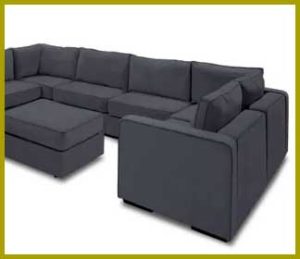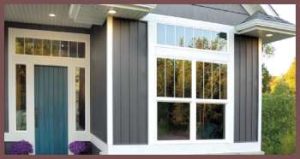When you need a perfect blend of style, durability, and sustainability in your flooring choice, you may have already known about Woodland Reserve flooring.
It is a brand that generated quite a buzz in recent years for its unique approach to hardwood flooring. But is it worth the investment?
Here we will explore the ins and outs of Woodland Reserve flooring, and help you make a decision if it’s the right choice for your home.
A Walk Through the Forest: The Woodland Reserve Story
Woodland Reserve isn’t your ordinary flooring brand. Inspired by nature lovers, they’ve made it their mission to bring that experience to your home. By prioritizing sustainability and utilizing cutting-edge knowledge, Woodland Reserve has made a name for itself in the flooring industry.
The Pros: Walking on Sunshine
- Variety in Wood Species, Grades, and Finishes

Woodland Reserve flooring has a sheer range of options available.
The brand offers a wide collection of wood species, including oak, hickory, and maple, among others.
This variety allows you to find the just right flooring to complement your home’s design and style.
Woodland Reserve also provides different grades and finishes, so you can choose a floor with a more consistent appearance or one that showcases natural variations in color and texture. This
flexibility means you’re sure to find a Woodland Reserve floor that aligns with your aesthetic and financial plan preferences.
- Durability You Can Count On
Woodland Reserve flooring is known for its durability. Using advanced engineering techniques, the brand creates floors that are intended to withstand the wear and tear of daily life. This means that Woodland Reserve floors are less prone to scratches, dents, and other forms of injury.
Additionally, Woodland Reserve offers options with a protective aluminum oxide finish, which further enhances the floor’s durability. This feature makes the flooring particularly appropriate for high-traffic areas in your home, as well as for households with pets or children.
Also Read: Is Southwind Vinyl Plank Flooring Worth It?
- Eco-Friendly Excellence
In today’s world, choosing eco-friendly products is more significant than ever. Woodland Reserve understands this and has made a promise to sustainability. They source their wood from sensibly managed forests, ensuring that their flooring products have a minimal impact on the environment.
Woodland Reserve also adheres to strict environmental standards throughout the manufacturing process. By using low-VOC (volatile organic compound) adhesive and finishes, they create flooring products that contribute to healthier indoor air quality.
This focus on sustainability not only reimbursement the planet but also helps create a safer living environment for you and your family.
- Simple Installation for DIY Enthusiasts
If you’re a do-it-yourself enthusiast, you’ll be grateful for the ease of installation that Woodland Reserve flooring provides. The click-lock system featured in many of their products allows for a straightforward setup without the need for nails or glue.
This means you can save time and currency by installing your Woodland Reserve floor yourself, without the need for professional assistance.
In addition to being easy to install, Woodland Reserve floors are also simple to maintain. Regular sweeping or vacuuming, along with occasional damp mopping, is all that’s necessary to keep your floors looking their best.
- Stability and Adaptability

Woodland Reserve offers a range of engineered wood flooring options.
Engineered wood floors consist of a layer of real wood on top of a full of meaningful plywood core.
This construction provides several benefits compared to solid hardwood floors, such as greater constancy and resistance to humidity and temperature changes.
The increased constancy of engineered Woodland Reserve flooring means that it is less likely to warp, buckle, or develop gaps due to changes in humidity.
This makes it a more appropriate option for installation in areas with fluctuating temperatures or higher levels of moisture, such as basements or homes with radiant heating systems.
- Combining Style and Function
With Woodland Reserve flooring, you don’t have to give up style for functionality. Their products are focused to look visually appealing and practical. The diverse selection of wood species, grades, and finishes allows you to create an exclusive and stunning look for your home.
At the same time, the durability, sustainability, and easy installation of Woodland Reserve floors make them a practical choice that will position the test of time.
This perfect blend of style and purpose makes Woodland Reserve flooring an excellent choice for homeowners seeking a beautiful yet practical flooring solution.
The Cons: A Few Knots in the Wood
- Price Range
One of the drawbacks of Woodland Reserve floor covering is its price. High-quality resources and sustainable practices can drive up costs, making it a more expensive option compared to some competitors.
However, if you’re willing to go for a quality product, the benefits may be more important than the initial cost, so budget is not a matter.
- Limited Availability
It is not available through all retailers. This limited availability may make it harder for some clientele to access their products. However, their website offers a store locator to help you find a merchant near you.
Also Read: Reasons To Have GemCore Flooring For Your Home.
FAQ: Answering Your Woodland Reserve Questions
Woodland Reserve is a private-label brand restricted to Floor & Decor, a leading specialty retailer in the hard surface flooring market.
The “best” grade of wood flooring is prejudiced and largely depends on your personal preferences and needs. Higher grades, such as “Select” or “Clear,” have fewer knots and color variations, giving a more uniform manifestation. Lower grades, like “Rustic” or “Character,” provide a more natural, varied look. Ultimately, the choice depends on the art you want to achieve and your budget.
When choosing a hardwood floor for a house with dogs, consider factors such as scratch resistance, durability, and ease of maintenance. Hardwoods like oak, maple, and hickory are popular choices since they are harder and more scratch-resistant than softer woods like pine or fir. Additionally, a matte or low-gloss come to an end can help disguise minor scratches.
When it comes to durability in fake wood flooring, luxury vinyl plank (LVP)and laminate floor covering are the top contenders. Both options provide the look of hardwood without maintenance concerns and can endure heavy traffic, pets, and spills.
Luxury vinyl plank flooring is made from manifold layers, including a wear layer that offers excellent scratch and dent resistance. It’s also waterproof, making it an exceptional choice for kitchens, bathrooms, and basements.
Laminate flooring, on the other hand, is made from high-density fiberboard with a photographable image of wood on top, protected by a wear layer. It’s highly resistant to scratches and fading but is more vulnerable to moisture damage compared to LVP.
In Conclusion
Woodland Reserve flooring is a incomparable option for durability, and a focus on sustainability that sets it apart from the competition.
Yes, there are some drawbacks, like the higher price point and limited availability, the benefits of Woodland Reserve flooring can make it a wise investment for many homeowners. So, why not you also go for it.
By considering both the pros and cons and addressing the regularly asked questions, you should now have a better understanding of Woodland Reserve flooring and whether it’s the right choice for your home. Remember, the key to finding the perfect flooring is to carefully believe your needs, preferences, and budget.
Happy floor hunting!



